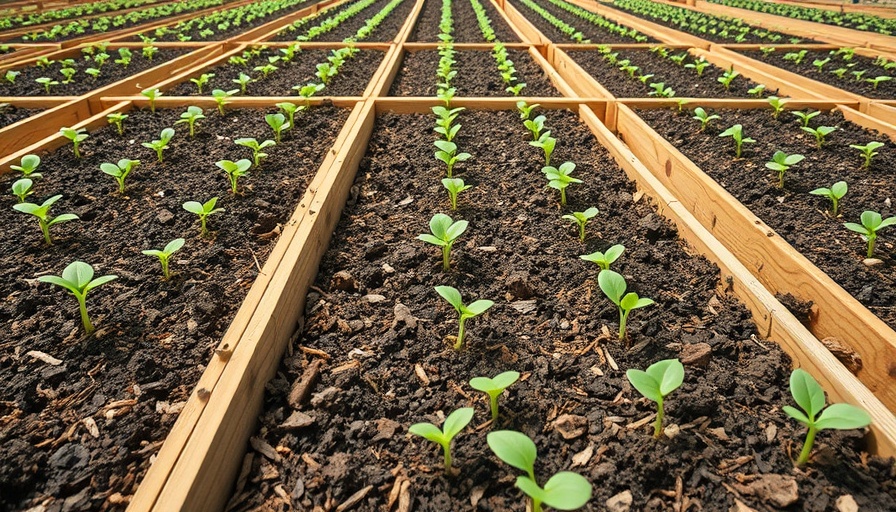
Building a Strong Foundation: The Importance of Garden Soil
As spring unfurls its vibrant colors, it signals not just the blooming of flowers but also the promise of fresh vegetables. For many aspiring gardeners, a verdant garden begins below the surface. Understanding the significance of high-quality soil is paramount for not only successful planting but also for nurturing sustainable gardening practices.
While many newcomers may instinctively reach for seeds, the unsung hero of the garden is the soil itself. Healthy soil is not merely a growing medium; it is a living ecosystem. With roots from countless microorganisms and organic matter, soil supports plant life by retaining nutrients and moisture. Thus, before seeds hit the ground, gardeners must first give careful attention to the soil beneath.
Check Your Soil Composition: PH Matters
To ensure your garden thrives, start by assessing the soil's composition—its PH level is critical. This can be easily determined through basic testing kits available at garden centers or by sending samples to a lab. Understanding whether your soil is acidic, neutral, or alkaline will help guide your plant selections.
For instance, chamomile and blueberries prefer acidic soils, while clovers thrive in neutral environments. By recognizing these nuances, you can create an environment tailored to the specific needs of your desired plants, setting the stage for bountiful harvests.
Cleaning Up: The First Step to Tilling
Once you've assessed the PH of your soil, the next step is cleaning it. A successful garden starts with a clean slate: clear away weeds, stones, and debris that can stunt your plants' growth. Early removal of young weeds is vital, preventing them from spreading seeds throughout your garden. This foundational cleanup work not only enhances your planting space but also ensures better airflow and sunlight exposure for your plants.
Tilling: Preparing Your Soil for Nutrient Absorption
Tilling is an essential process in pre-gardening preparation. By cultivating the earth to a depth of 8 to 12 inches, you encourage aeration and moisture retention. This process, ideally done in the fall, allows nutrients to settle into the ground over the winter months. Reevaluating the soil in spring allows you to make adjustments, such as incorporating organic fertilizers to enhance nutrient content.
Incorporating Nutrients: What You Need to Know
Every garden’s soil is unique, and most will require an infusion of nutrients before planting. Compost is a gardener's best friend; it enriches the soil with organic matter, enhances structure, and promotes microbial activity. Additionally, balanced fertilizer blends containing nitrogen, phosphorus, and potassium are essential to support robust growth. Always follow guidelines to avoid over-fertilization, which can harm your plants rather than help them thrive.
Actionable Tips for the New Gardener
Before you reach for those seeds, consider these actionable insights that will foster your gardening journey:
- Be Patient and Observant: Monitor your soil's response to amendments and be open to adjusting your approach based on what you observe.
- Connect with Local Communities: Engaging with community gardens can provide both insights and camaraderie, enriching your gardening experience.
- Continue Learning: Urban farming techniques, such as vertical farming and hydroponics, can diversify your gardening practices, especially in smaller spaces.
Final Thoughts: Embrace the Art of Gardening
As you prepare to plant your garden, remember that the roots of your success lie in the soil. Whether you aspire to grow a bounty of vegetables or create a soothing floral retreat, nurturing good soil health is the guiding principle. Your journey as a gardener can cultivate not just plants but also a love for sustainable practices and a connection to your community.
So, roll up those sleeves and dig into the rewarding world of gardening!
 Add Row
Add Row  Add
Add 




 Add Row
Add Row  Add
Add 

Write A Comment